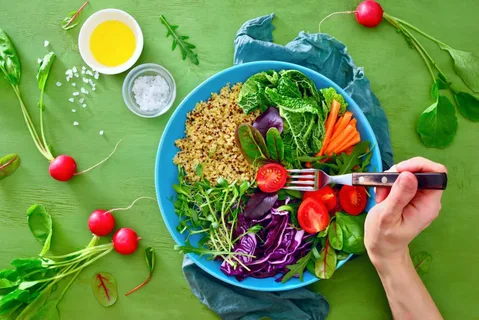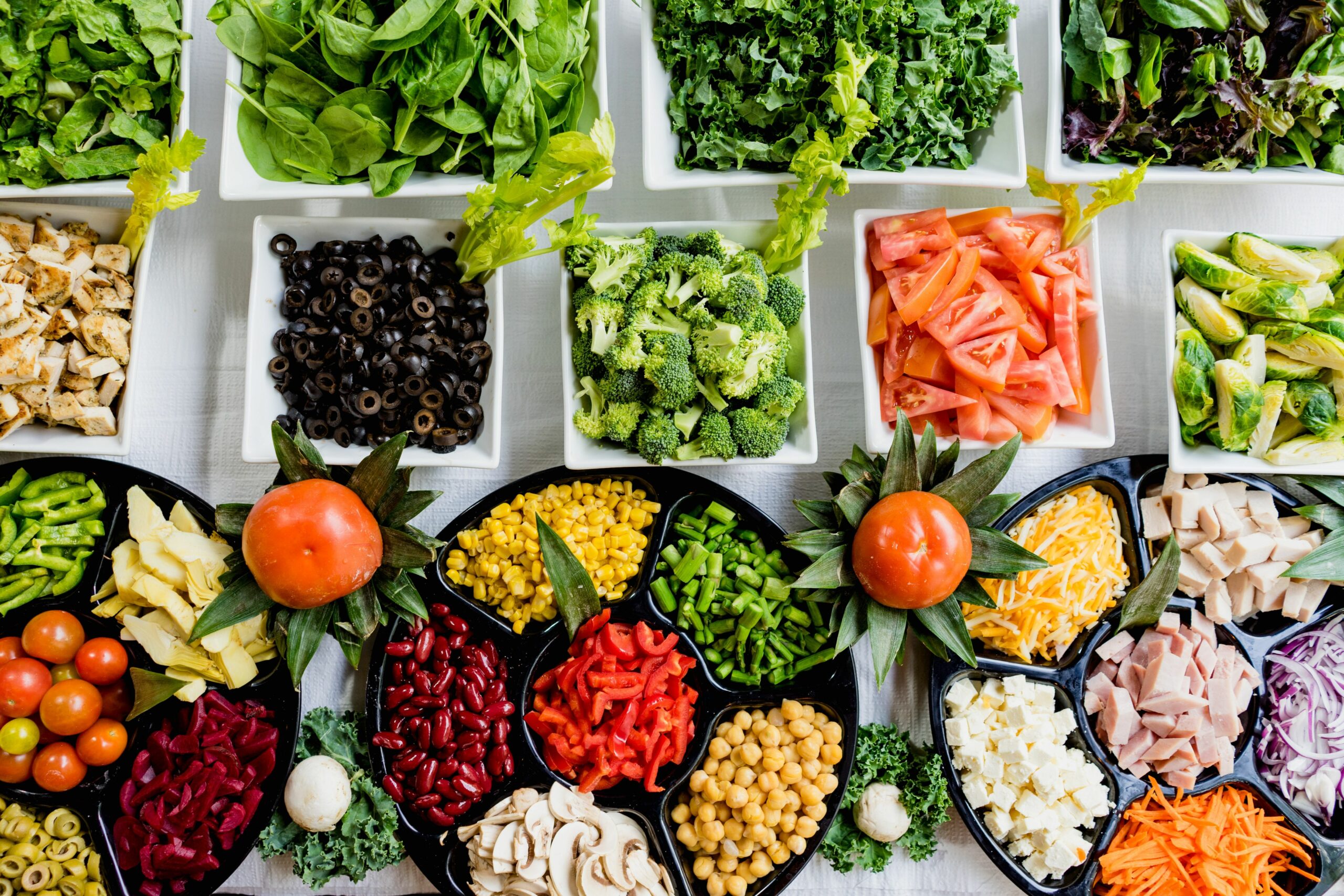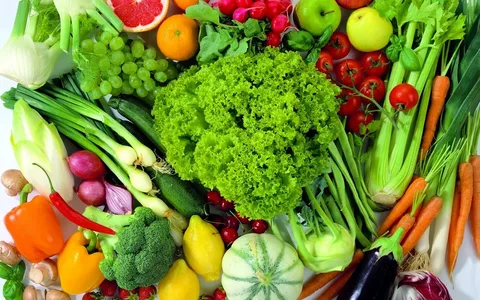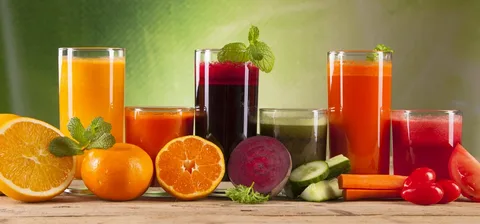Choosing the Best Vegetables for Your Diet
Prioritize Leafy Greens and Cruciferous Vegetables
A well-balanced diet that includes a variety of vegetables can provide numerous health benefits, from reducing the risk of chronic diseases to supporting healthy weight management.
When it comes to choosing the best vegetables for your diet, prioritize leafy greens and cruciferous vegetables as they offer an array of essential nutrients.
Leafy Greens
Leafy green vegetables are rich in vitamins A, C, K, and folate, as well as minerals like calcium and iron.
- Spinach: high in iron and packed with antioxidants
- Kale: rich in vitamin C and a powerful antioxidant known as kaempferol
- Lettuce: a good source of potassium and fiber
- Collard Greens: rich in vitamins A, C, and K, as well as minerals like calcium and iron
Cruciferous Vegetables
Cruciferous vegetables are rich in vitamins C and K, as well as fiber and antioxidants.
- Broccoli: high in vitamin C and a powerful antioxidant known as sulforaphane
- Brussels Sprouts: packed with vitamins C and K, as well as fiber and antioxidants
- Cauliflower: rich in vitamin C and a good source of fiber and antioxidants
- Kohlrabi: high in vitamin C and a good source of fiber and antioxidants
These vegetables have been shown to provide numerous health benefits, including reducing inflammation, supporting healthy digestion, and helping to regulate blood sugar levels.
Incorporating Leafy Greens and Cruciferous Vegetables into Your Diet
The key is to make them a part of your regular diet by incorporating them into meals and snacks throughout the day.
- Start with salads: add leafy greens like spinach, kale, or collard greens to salads along with other vegetables like cherry tomatoes, cucumbers, and carrots
- Steaming is a great way to cook cruciferous vegetables without losing their nutrients: try steaming broccoli, Brussels sprouts, cauliflower, or kohlrabi as a side dish or add them to soups and stews
- Add sautéed leafy greens like spinach or kale to omelets, stir-fries, or pasta dishes for an extra nutritional boost
- Make smoothies with frozen leafy greens like spinach or kale, paired with fruits like banana or berries and a source of protein like Greek yogurt or almond milk
By prioritizing leafy greens and cruciferous vegetables in your diet, you can reap the numerous health benefits they have to offer while maintaining a balanced and delicious meal plan.
Look to the Mediterranean Diet as a Guide
The Mediterranean diet has been extensively studied for its numerous health benefits, and one of the key components of this diet is the variety and quality of vegetables consumed. When it comes to choosing the best vegetables for your diet, looking to the Mediterranean diet as a guide can be incredibly informative.
Vegetables are an essential component of a healthy diet, providing essential nutrients, fiber, and antioxidants that support overall health and well-being. However, not all vegetables are created equal, and some provide more nutritional benefits than others.
Key Principles for Choosing the Best Vegetables
- Variety is Key: The Mediterranean diet emphasizes consuming a wide variety of fruits and vegetables, including leafy greens, cruciferous vegetables, and colorful bell peppers. Aim to include at least five servings of different vegetables in your diet each day.
- Choose Seasonal Produce: Eating seasonal produce ensures that you’re getting the freshest possible options. Seasonal produce is also often lower in price and higher in nutritional value than out-of-season produce.
- Opt for Dark Leafy Greens: Leafy greens such as spinach, kale, and collard greens are rich in antioxidants, vitamins, and minerals. They’re a great source of iron, calcium, and vitamin K, making them an excellent addition to any meal.
- Incorporate Cruciferous Vegetables: Cruciferous vegetables like broccoli, cauliflower, and Brussels sprouts contain sulforaphane, which has been shown to have anti-inflammatory properties. They’re also high in fiber and vitamins C and K.
- Select Colorful Bell Peppers: Bell peppers come in a variety of colors, each with its own unique nutritional profile. Green bell peppers are higher in vitamin C, while red bell peppers are rich in lycopene, an antioxidant that’s been linked to reduced risk of certain cancers.
Some of the best vegetables to include in your diet, based on the Mediterranean diet model, are:
- Leafy greens (spinach, kale, collard greens)
- Cruciferous vegetables (broccoli, cauliflower, Brussels sprouts)
- Colorful bell peppers (red, yellow, green)
- Mushrooms (rich in vitamin D and antioxidants)
- Tomatoes (high in lycopene and antioxidants)
Remember to include a variety of vegetables at different meals and snacks to reap the numerous health benefits. Aim for five servings per day, with each serving being approximately 1/2 cup cooked or 1 cup raw.
The key is to make vegetables a staple in your diet by incorporating them into every meal. Experiment with new recipes, try different cooking methods, and find healthy ways to add more vegetables to your meals.
Preparing Vegetables for Maximum Nutrition
Steaming and Roasting Bring Out the Best Flavors and Nutrients
When it comes to preparing vegetables, there are several techniques that can bring out the best flavors and nutrients. Steaming and roasting are two popular methods that not only preserve the natural goodness of the vegetable but also enhance their taste and nutritional value.
The key to unlocking maximum nutrition from your vegetables is to use a combination of gentle heat, moisture, and minimal processing. This approach allows the delicate enzymes and phytochemicals present in the vegetables to remain intact, making them more bioavailable for absorption by the body.
Steaming, one of the most gentle cooking methods, involves exposing vegetables to steam rather than direct heat. This technique helps preserve the water-soluble vitamins, such as vitamin C and B vitamins, which are easily destroyed when exposed to high temperatures or dry heat. Steaming also minimizes the loss of minerals like potassium and iron.
When steaming vegetables, use minimal water to prevent dilution of the nutrients. You can add a tablespoon of lemon juice or vinegar to help retain the color and flavor of the vegetables. Choose stainless steel or ceramic cookware over aluminum or copper as they do not leach into food and compromise its nutritional content.
Roasting, on the other hand, involves cooking vegetables in the dry heat of the oven. This technique brings out the natural sweetness and caramelizes the surface of the vegetable, which can be beneficial for certain nutrients like beta-carotene found in sweet potatoes. Roasting also enhances the bioavailability of minerals like magnesium and potassium.
When roasting vegetables, choose dark-colored vegetables such as Brussels sprouts or broccoli as they contain more antioxidants and phytochemicals than their green counterparts. Toss the vegetables with a small amount of oil and seasonings to enhance flavor without overpowering the delicate flavors of the vegetables.
The choice between steaming and roasting ultimately depends on personal preference, the type of vegetable being prepared, and the desired outcome. Some vegetables like asparagus or carrots are better suited for steaming due to their tender nature, while others like sweet potatoes or Brussels sprouts benefit from the caramelization that occurs during roasting.
Regardless of which technique you choose, remember to use fresh, seasonal produce and handle it gently to avoid bruising or tearing. This will ensure maximum retention of nutrients and flavors in your vegetables.
By adopting these simple tips for preparing vegetables through steaming and roasting, you can unlock the full potential of the nutrient-rich foods that are essential for maintaining optimal health and well-being.
Raw or Cooked: What’s the Best Way?
The preparation method can significantly impact the nutrient content and bioavailability of vegetables, whether they’re consumed raw or cooked.
Raw vegetables are rich in fiber, vitamins, minerals, and antioxidants, but their cell walls may be tough and difficult for the body to break down, reducing their absorption rates. On the other hand, cooking can make some nutrients more accessible by breaking down cellulose and releasing bound nutrients like beta-carotene.
However, excessive heat can also lead to a loss of water-soluble vitamins like vitamin C and B vitamins, which are sensitive to temperature and moisture changes. In contrast, raw vegetables tend to retain their nutrient profile longer when stored properly in the refrigerator or frozen at very low temperatures.
The Benefits of Raw Vegetables
- Retain more water-soluble vitamins like vitamin C and B vitamins.
- Preserve fiber content, which is essential for healthy digestion and satiety.
- Maintain antioxidants like polyphenols, flavonoids, and carotenoids that offer protection against oxidative stress and chronic diseases.
The Benefits of Cooked Vegetables
- Make bound nutrients more accessible by breaking down cellulose and other cell walls.
- Enhance the bioavailability of starches, reducing their glycemic impact when paired with protein and healthy fats.
- May reduce phytate content, making minerals like zinc, iron, and calcium more readily available to the body.
The Optimal Approach: Balance Raw and Cooked Options
To reap the benefits of both raw and cooked vegetables, consider a balanced approach that includes:
- Raw or lightly steamed leafy greens like kale , spinach , and collard greens for optimal nutrient retention.
- Slightly cooking or roasting starchy vegetables like carrots, beets, and sweet potatoes to enhance their bioavailability.
- Consuming a variety of raw and cooked vegetables throughout the day to maximize nutrient intake and minimize losses.
Conclusion
Ultimately, whether you prefer your vegetables raw or cooked, the key is to find a balance that works for you. Experiment with different preparation methods, storage techniques, and recipes to unlock the full potential of your favorite vegetables and reap their numerous health benefits.
Timing Matters: Eating Vegetables at the Right Moment
Avoid Overcooking: Preserve Vitamins and Minerals
The timing of eating vegetables plays a significant role in maximizing their nutritional benefits, as it can affect the levels of essential vitamins and minerals they contain.
Vegetables are rich in water-soluble vitamins such as vitamin C and B vitamins, which are highly susceptible to degradation when cooked. The longer they are exposed to heat, the more these delicate nutrients will break down and potentially disappear.
For example, broccoli contains a high amount of vitamin C and sulforaphane, an antioxidant with anti-inflammatory properties. If it is overcooked, these beneficial compounds can be significantly reduced or even lost.
Cooking methods such as boiling, steaming, and sautéing all require different cooking times to preserve the nutrients in vegetables without causing damage.
Steaming, for instance, requires a shorter cooking time than boiling because it uses lower heat, minimizing the loss of water-soluble vitamins. On the other hand, methods like microwaving can be particularly detrimental, as the high heat and short cooking times can cause a rapid breakdown of nutrients.
The ideal cooking method and timing for vegetables vary depending on their texture and density. Leafy greens such as spinach and kale are typically more sensitive to heat than denser vegetables like carrots or sweet potatoes, requiring gentler cooking methods and shorter cooking times to maintain their nutrient content.
As a general rule of thumb, vegetables should be cooked until they are tender but still retain some crunch. Overcooking can strip them of not only essential vitamins and minerals but also fiber and other beneficial compounds that contribute to overall health and well-being.
Timing is everything when it comes to cooking vegetables, and understanding the optimal timing for each type can significantly boost their nutritional value while maintaining their natural flavor and texture. By paying attention to the cooking methods, durations, and temperatures used for different types of vegetables, individuals can enjoy a balanced diet that maximizes its health benefits.
Furthermore, incorporating more raw or minimally cooked vegetables into meals is an effective way to retain essential vitamins and minerals while minimizing nutrient degradation during the cooking process. Raw vegetables such as salads and vegetable juices provide an excellent source of fresh nutrients without exposing them to heat-induced destruction.
Get Your Daily Dose of Fiber from Vegetables with a High Water Content
The timing and manner in which we consume vegetables plays a crucial role in maximizing their nutritional benefits and promoting overall health. One key aspect to consider is the concept of timing matters, specifically eating vegetables at the right moment.
When it comes to vegetables, some are more beneficial than others when consumed at different times of day. For instance, leafy green vegetables such as spinach and kale are rich in antioxidants and should be consumed during breakfast or early morning to kick-start your metabolism and energy levels.
On the other hand, cruciferous vegetables like broccoli and cauliflower contain compounds that aid digestion and can help reduce bloating. These vegetables are best consumed at lunchtime, allowing their beneficial effects to take hold throughout the afternoon.
Vegetables with high water content such as cucumbers and bell peppers are rich in fiber and electrolytes, making them excellent choices for mid-day snacking. Consuming these vegetables around noon can help replenish fluids and provide a boost of energy.
Fruits like citrus fruits (oranges, grapefruits) which have high water content should be consumed with breakfast as they contain vitamins and minerals that can kick-start your digestive system in the morning.
The fiber from vegetables is beneficial for maintaining regular bowel movements, preventing constipation and supporting healthy gut bacteria. Including a mix of low and high-fiber vegetables in your diet will help you get enough fiber without causing discomfort or digestive issues.
It’s essential to eat a variety of colorful vegetables to reap the benefits of their different nutrients. Incorporate dark leafy greens, orange and red vegetables like sweet potatoes, carrots, bell peppers, and other low water content vegetables in your meals throughout the day.
Overall, eating vegetables at the right moment can significantly impact their nutritional value and overall health benefits. By incorporating a mix of high-water content and fiber-rich vegetables into your diet at strategic times, you’ll be well on your way to achieving optimal nutrition and well-being.
- Lip Filler London – Lip Augmentation & Natural Lip Enhancement - December 16, 2025
- Tennessee’s THC Beverage Market - June 5, 2025
- Top THC Infused Seltzers in Delaware - June 5, 2025





